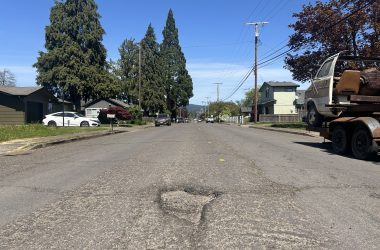It’s a crisis in our community which, on paper, has a very easy solution, yet in practice might be the hardest challenge we have – creating enough affordable housing to meet our needs.
Indeed, a perfect storm of factors have conspired to make Lane County’s housing situation unsustainable and untenable. Some of these factors are political, some economic, and some come under the heading of being a victim of its own success.
After all, when you are a state and region that attracts a sizable amount of in-migration, you tend to run out of housing stock quickly.
“Housing is a huge issue in Springfield and it’s on everyone’s mind from elected officials to almost every citizen,” said Sean VanGordon, Springfield mayor. “We simply have to create more places for people to live.”

VanGordon, for his part, is acutely aware of the issue. He and the council are working on multiple solutions, including wringing more housing out of existing stock, reducing costs and impediments to building, and updating and amending zoning restrictions.
“It’s taken decades to get into this situation, and it’s going to take some time to get out of it,” he said. “But there are solutions, and I’m optimistic that ultimately our affordable housing crisis is solvable.”
To his point, if one looks back at some of the historic factors that have created our housing shortage, there are a few that stand out
“Oregon’s land-use system adopted in the 1970s and ‘80s is complicated. While it created some real benefits to our environment, it undoubtedly limited the amount of land you could build on,” VanGordon said.
Another issue is that, when it comes to affordable housing, Oregon and this region have only recently dug out from the historic economic challenge of the 2008 recession.
“It took until 2016 to actually recover from 2008, in terms of housing stock,” VanGordon said. “And only a couple of years after this recovery, we actually lost a good amount of housing stock from the Holiday Farm Fire.”
Given the challenges of simply building a lot more houses, the mayor and council have worked to find more housing amid the existing stock.
A couple of years ago, the council made it much easier for homeowners to create extra living space in their houses called accessory dwelling units or ADUs. Extra rooms, add-ons and spare garages are now, as the mayor says: “adding doors to our neighborhood.”
Springfield’s council has also worked to amend certain codes to increase building.
“There are some simple but important steps we are taking to make it easier to build the housing we need,” VanGordon said. “We have postponed implementing the ‘System Development Fee’ that goes on all new construction, so that the fee isn’t actually charged until the dwelling is occupied to reduce the upfront cost.”
The Council and Team Springfield (the City, Springfield Utility Board, Willamalane, and the Springfield School District) have also been looking at ways to change zooming to make it easy to build. Another organization is also working to help increase places to live and is operating as a kind of Match.com for renters and landlords.
“Home Share Oregon is a nonprofit that helps match people who need places to live with people who have extra space,” according to the organization’s executive director, Tess Fields. “We are so much more than a rental organization. We collaborate with renters and landlords to find the right matches, so it’s not just matching a person who needs a dwelling with someone who has one; it’s making sure they are compatible.”
Home Share Oregon also works with both groups to make options affordable.
“For example, we can help negotiate lower rent if a prospective renter is willing to do chores and whatnot,” Fields said.
In addition to finding new places to build homes, and/or finding new dwellings among existing homes, another new idea to throw into the mix is making materials cheaper to construct dwellings.
Enter Oregon’s own The Tall Wood Design Institute, a collaboration with Oregon State University and the University of Oregon. This relatively new organization is one of the nation’s first interdisciplinary research collaboratives focused exclusively on the advancement of mass timber and other wood products building solutions. They are innovating the use of wood to make structures stronger, more efficient, and cheaper.
“This kind of mass-ply timber can be made cheaper, and faster and for use with prefabricated buildings,” said Judith Sheine, director of design at the Institute, and a UO professor about what this new type of wood product can do for buildings. “We are beginning a test program with the Port of Portland to test out construction of modular units that show real promise in terms of cheaper and more efficient housing units.”
Nothing on its own can solve our housing crisis. After all, it’s a problem that has been created over time and over a great deal of competing interests and even inaction.
But, as Jacob Fox, the executive director for the region’s low-income housing authority, Homes For Good, states: “We are the wealthiest nation in the world and having people live on the streets is unacceptable.”
And he believes that we must take the long view and realize that small incremental changes are the only way we can eventually solve our affordable housing crisis.
Michael Dunne is a business columnist for The Chronicle.







